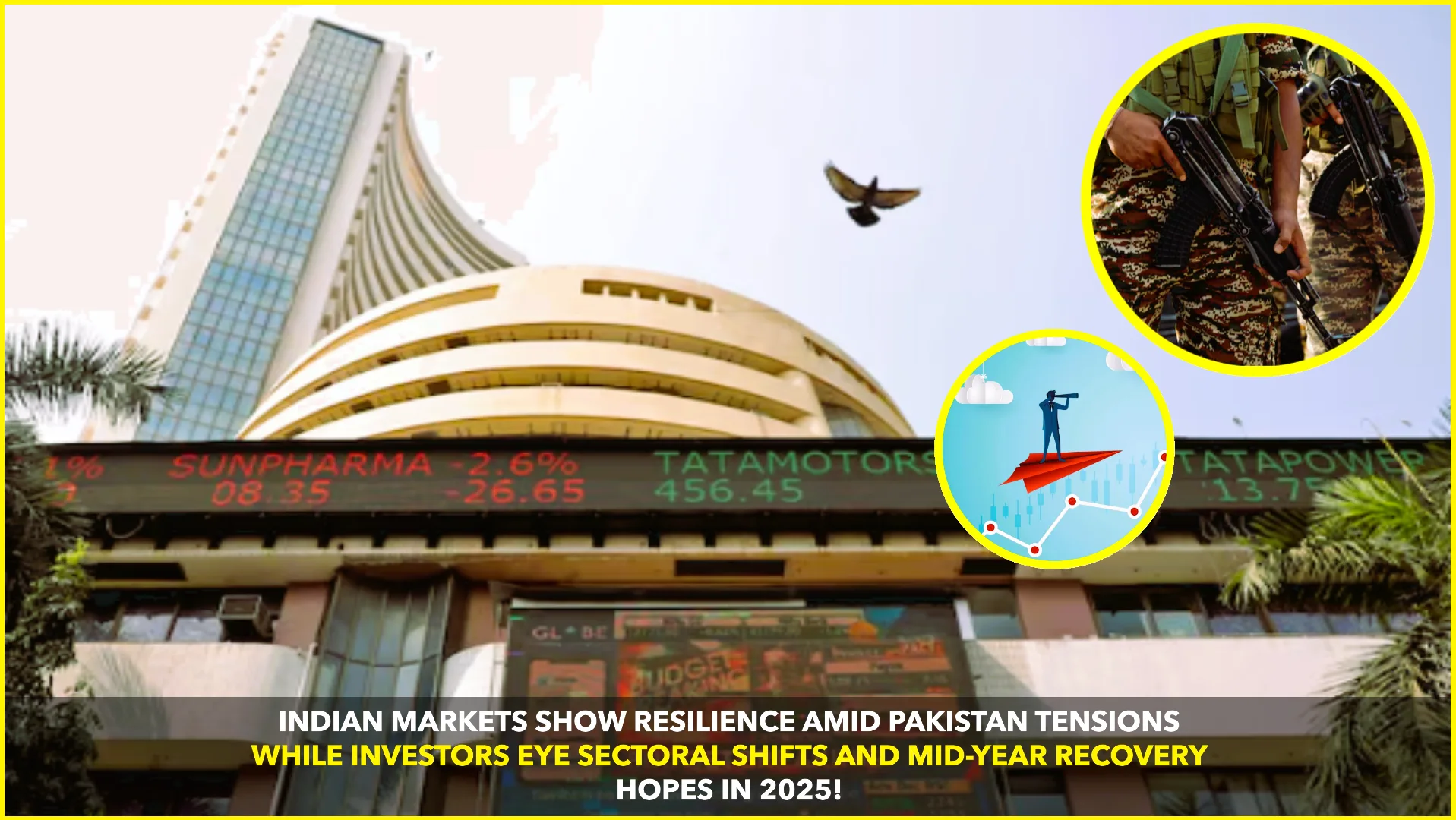The Indian stock market, a cornerstone of the country’s financial ecosystem, has recently witnessed a significant downturn, leaving investors anxious and speculating about the causes. With benchmarks like the Sensex and Nifty 50 taking a hit, questions such as “Why is the market falling?” and “What is causing the Sensex today live decline?” are flooding forums and news headlines. This article dives deep into the key reasons behind the slump, the impact on investors, and what lies ahead.
Global Economic Turmoil
The global economic landscape in 2025 has been riddled with uncertainties, affecting financial markets worldwide. A few key factors influencing the Sensex today live and Nifty 50 share price include:
- Recessionary Fears in Developed Markets:
- Major economies like the U.S. and the EU are grappling with slower growth rates, spiking fears of a global recession. This uncertainty has led foreign investors to pull out funds from emerging markets, including India, contributing to the decline in the Nifty share price and Sensex today.
- Geopolitical Tensions:
- The ongoing geopolitical crises, such as conflicts in Eastern Europe and escalating trade wars between global powers, have created volatility in global markets. This has a cascading effect on the Nifty 50 today and BSE Sensex today live, eroding investor confidence.
- Interest Rate Hikes by Central Banks:
- Central banks worldwide, including the U.S. Federal Reserve, have continued to raise interest rates to combat inflation. Higher rates have made debt instruments more attractive, leading to an exodus of foreign institutional investors (FIIs) from Indian equities.
Domestic Challenges Weighing on the Markets
India’s stock markets are not immune to domestic headwinds, which have compounded the global issues.
- Weak Corporate Earnings:
- Several sectors have reported weaker-than-expected earnings for the last quarter. Key players in banking, IT, and FMCG have seen profit margins shrink, impacting Nifty 50 share price and bank nifty share price.
- Rising Inflation:
- Inflationary pressures have continued to mount in 2025, driven by higher crude oil prices and supply chain disruptions. Elevated costs have squeezed consumer spending, dampening the prospects for companies reliant on domestic demand.
- Policy Uncertainty:
- Delayed reforms and mixed signals from policymakers have left investors jittery. Concerns over taxation changes, regulatory overhauls, and sector-specific policies have created uncertainty, dragging down the Sensex and Nifty today.
Key Sectors Under Pressure
Some of the sectors experiencing significant downturns include:
- Technology:
- The IT sector, a traditional market heavyweight, has been struggling due to reduced spending from global clients. Major IT firms listed on the Nifty 50 have revised their growth forecasts downward, contributing to the slump.
- Banking and Financials:
- The bank nifty share price has also taken a hit as rising interest rates and elevated bad loans put pressure on margins. Additionally, weak credit growth has further impacted the sector.
- Real Estate:
- The real estate sector is reeling under the combined effects of rising borrowing costs and subdued consumer demand, affecting stocks within the Sensex and Nifty 50.
Market Sentiment and Investor Behavior
The broader market sentiment has been cautious, with retail and institutional investors adopting a wait-and-watch approach. Let’s break down the trends:
- Retail Investors Turning Risk-Averse:
- Many retail investors, alarmed by the recent corrections, have reduced their equity exposure. The sentiment that the “market is falling” has led to higher inflows into safer assets like gold and fixed deposits.
- FII Outflows:
- Foreign Institutional Investors have been significant sellers in the Indian market, withdrawing capital in response to global uncertainties and better returns in developed markets. This has amplified the pressure on indices like the Nifty 50 today and BSE Sensex today live.
- Panic Selling:
- Panic selling by small investors, triggered by negative headlines, has further accelerated the decline in stock prices. Stocks that were among the top gainers just months ago are now underperforming, adding to the overall negativity.
Impact on Benchmark Indices
The effects of the aforementioned factors are visible in the benchmark indices:
- Sensex Today Live: The BSE Sensex today has lost substantial ground, with heavyweight stocks across sectors trading in the red.
- Nifty 50 Today: The Nifty sensex today has struggled to hold key psychological levels, creating additional resistance for market recovery.
Both indices have seen significant volatility, with intraday swings reflecting the nervousness among traders and investors.
What Can Stabilize the Market?
While the current scenario appears grim, a few steps can help stabilize the market:
- Policy Measures:
- The government and the Reserve Bank of India (RBI) could introduce measures to stimulate growth and provide clarity on reforms, boosting investor confidence.
- Corporate Performance:
- A turnaround in corporate earnings, particularly in critical sectors like banking and IT, could lend support to the indices.
- Global Stability:
- A resolution of geopolitical tensions and clearer monetary policy guidance from global central banks could reduce volatility.
- FII Inflows:
- Attracting foreign investment through favorable policies and a stable macroeconomic environment can provide a much-needed cushion to the markets.
Tips for Investors in the Current Scenario
For investors looking to navigate this turbulent phase, here are some actionable tips:
- Focus on Fundamentals:
- Stick to fundamentally strong stocks with robust earnings growth and manageable debt levels.
- Diversify Your Portfolio:
- Avoid overexposure to a single sector or stock. Diversification can help mitigate risks.
- Don’t Panic-Sell:
- Market corrections are a natural part of the investment cycle. Avoid panic-selling and focus on long-term goals.
- Explore Safe Havens:
- Consider allocating funds to safer assets like debt instruments, gold, or index funds to balance risk.
- Keep an Eye on Valuations:
- Use the correction as an opportunity to invest in quality stocks that are now trading at attractive valuations.
Conclusion
The Indian stock market’s fall in 2025 can be attributed to a mix of global and domestic challenges, including economic uncertainties, weak earnings, and volatile investor sentiment. While the downturn has caused anxiety, it also presents opportunities for disciplined and informed investors.
The path to recovery will depend on a combination of government policies, corporate performance, and global stability. Until then, staying informed and adopting a cautious, long-term approach is the best way to navigate these choppy waters.
As the saying goes, “Every crisis is an opportunity in disguise.” For those who can weather the storm, the market correction might just pave the way for future gains.
Disclaimer
This article is for informational purposes only and does not constitute financial advice. Investors are advised to conduct their own research or consult a financial advisor before making investment decisions. The author and publisher are not liable for any financial losses arising from investments made based on this article.










